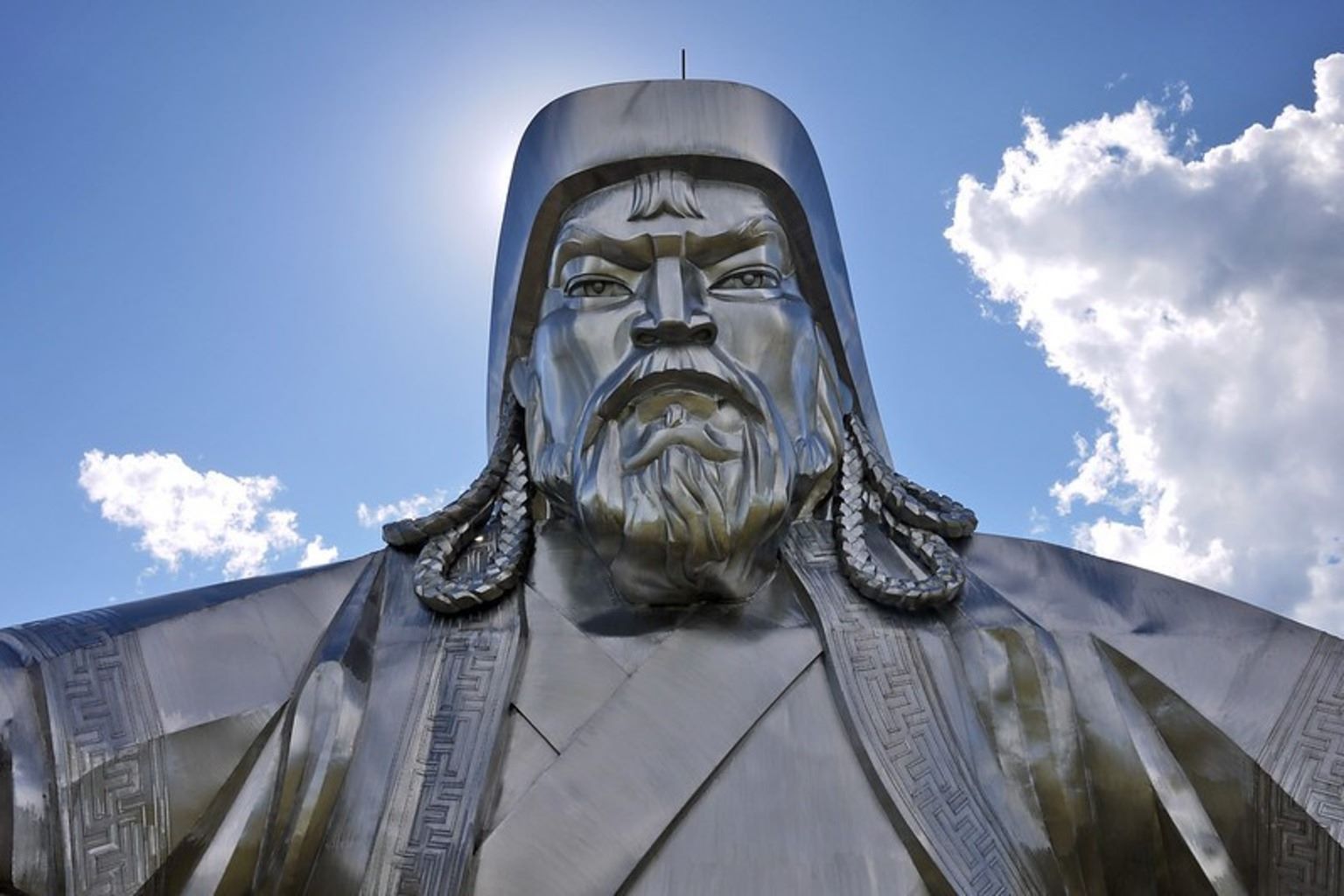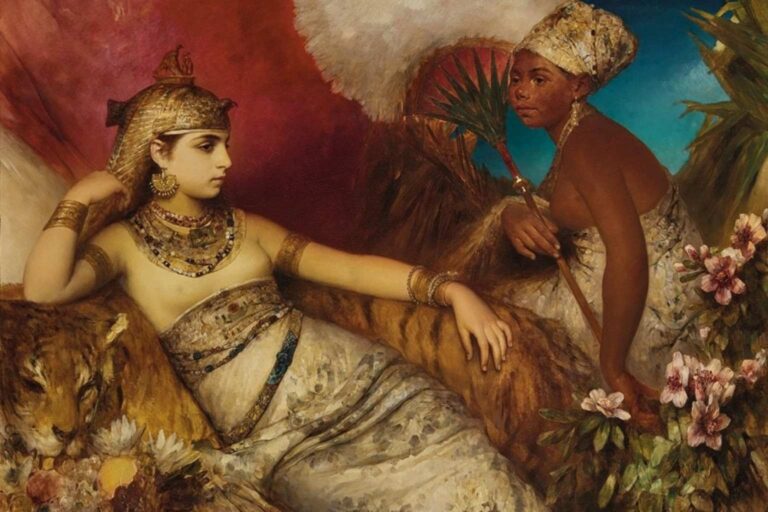History remembers Genghis Khan in extremes. As a butcher of cities. As a unifier of tribes. As a whisper in bloodlines and a storm across empires. But before he was a legend, he was lost, betrayed, and hunted. And then he came back.
His face rarely appears in paintings. His voice was never recorded. What survives is movement: armies, maps, orders, and memories handed down in fragments. He left behind no monologue, no testimony, only consequences. The facts about Genghis Khan are not neat. They live in blood, salt, silence, and strategy. His story is not about good or evil. It is about force. About becoming.
He was not a ruler in the traditional sense. He did not inherit power. He built it slowly, through memory and repetition. Even now, much of what we believe about him is stitched together from damage in walls that were broken, in cities that never recovered.
With this article, we don’t try to tell one story, but 15 quiet fragments that shaped Genghis Khan into the figure the world never forgot.
1. He was not born Genghis Khan
His name at birth was Temüjin, and it carried a story of vengeance. He was born near the Onon River, under a sky that offered no signs. His father named him Temüjin, after a Tatar warrior they had just killed.
There was no prophecy. No title. Only survival. He grew up in the shadow of abandonment and betrayal, hunted by clans that once claimed to be kin. The name “Genghis Khan” would come much later, chosen by others, not inherited. It meant a universal ruler. But it did not arrive with a crown. It arrived after hardship, after blood, after years of wandering without direction.
The boy named Temüjin had to disappear before the empire could begin.
2. His father was poisoned
The clan left his family to starve after his father’s death. His father, Yesügei, was a tribal leader who made a mistake. He aligned with the wrong group and accepted a meal from the Tatars, who poisoned him soon after.
When the news reached home, Temüjin was still a boy. His family included his mother, brothers, and younger siblings. They were cast out by the same tribe that had once sworn to protect them. Without a leader, they were no longer useful. Without protection, they became untouchable.
The tribe left them in the steppe, where survival was a daily negotiation. Winter was not a season. It was a fact. They dug for roots, scraped for bark, and survived on whatever could be chewed or burned.
It was not a battle that shaped him first. It was abandonment. In stories that ask who was Genghis Khan, this is the part they often skip: the years when he was not feared, but forgotten.
3. He killed his own brother
The conflict was not over power, but over food. There was too little meat and too many mouths. His older brother, Begter, was stronger, and he took more than his share. Temüjin was still a teenager, but one day he picked up a bow and resolved the imbalance.
His mother wept, but the clan said nothing. There was no trial, no exile, no punishment. The silence that followed was long, and it stayed.
Of all the facts about Genghis Khan, this one is often left without explanation. But it marks a beginning. A single arrow, and the pattern of survival began to take shape.
4. He was enslaved as a teen
Captured by a rival clan, he wore a wooden collar until he escaped. The Tayichi’ud clan captured him when he was still a teenager. They locked his neck in a heavy wooden collar and kept him under guard, not as a prisoner of war but as property.
He was not feared yet. He had no title. No legacy. Just another body under watch, forgotten in the dirt. For days, he said nothing. He studied the camp, the men, and the habits of those around him. Then, with the help of a guard who looked the other way, he slipped out and disappeared into the open steppe.
Among the more quietly brutal facts about Genghis Khan, this one is often softened. But it was not a moment of humility. It was a moment of memory, one that shaped how he would respond to capture, loyalty, and freedom for the rest of his life.
5. His rise began with loyalty
He chose his allies carefully and never forgot those who stood by him. His rise did not begin with battle. It began with memory. He remembered who gave him food when he was starving, who helped him escape when no one else would, and who stood beside him when he had nothing to offer in return.
The men who stayed with him were not always family. Some came from rival clans. Others held no status at all. But they remained, and he made sure they were never forgotten.
Genghis Khan built his early power through networks of trust rather than bloodlines. He shared what he had. He punished betrayal without hesitation and rewarded loyalty with land, command, and survival.
Among the more revealing facts about Genghis Khan, this one shows how his empire began not only through violence, but through a memory that kept the right names close.
6. He united the Mongol Tribes
Dozens of scattered clans accepted one banner and one name. For centuries, the Mongol steppes were divided. Tribes raided one another, formed temporary alliances, and collapsed in cycles of betrayal. No leader held power for long.
Genghis Khan changed that. Through strategy and force, he united the scattered clans under one structure. He welcomed former enemies into his ranks, as long as they submitted to discipline and order.
Once unified, the Mongol tribes moved with speed and precision. Loyalty was enforced. Chaos was reorganized into command.
Among the most significant facts about Genghis Khan, this one explains how an empire began, not with a single warrior, but with a system built from bloodlines that once fought each other.
7. He was voted ‘Genghis Khan’
The name meant universal ruler, and it was chosen by other men. In 1206, the leaders of many tribes met on the Mongol steppes. They held a kurultai, a council, to decide who would lead them. There, Temüjin received a new name. Not by inheritance, but by consensus. They called him Genghis Khan, a title that meant ruler of all.
The vote was more than a title. It was a turning point. It marked the end of scattered loyalty and the beginning of a single identity. Among the many facts about Genghis Khan, this one is pivotal. Before that moment, he was a survivor. After it, he became a system that others would follow.
8. His military strategies were revolutionary
Speed, deception, and discipline made him unstoppable. Genghis Khan did not always have the largest army on the field, but his forces moved faster, struck smarter, and disappeared before their losses could be counted.
He relied on deception, using false retreats to bait enemies into pursuit, then surrounding them. His messengers crossed vast distances in days, carrying orders that kept the entire command structure aligned.
His soldiers knew when to hold back, when to burn, and when to vanish. Every movement served a larger pattern. Discipline was enforced, and success was shared.
What did Genghis Khan do to conquer so much, so fast? He built a system where speed replaced size, and where the plan mattered more than the numbers.
9. He welcomed different religions
Genghis Khan allowed many faiths to exist under one empire. Genghis Khan did not believe in one god. What he believed in was order. Priests, monks, mullahs, and shamans were allowed to preach and practice freely, as long as their influence did not threaten the state.
He granted tax exemptions to holy men. He protected temples, mosques, monasteries, and churches. In some cities, he spared religious leaders and allowed them to keep preaching. He listened to Islamic scholars, met Taoist monks, and gave Christian leaders safe passage.
This tolerance was not a gesture of kindness. It was calculated. Faith brought trust. Trust made the rule easier. Among the more unusual facts about Genghis Khan, this one stands out. He burned cities, but he spared beliefs, if those beliefs stayed in line.
10. He promoted merit, not nobility
His generals were chosen for loyalty and skill, not bloodline. In most empires, titles passed from father to son. Power stayed in families, untouched by ability. Genghis Khan broke that rule. In his ranks, status came from what you could do, how you rode, how you fought, and how long you stayed.
Some of his commanders had once fought against him. Others had no noble background at all. Farmers, shepherds, and the sons of tradesmen found themselves leading thousands. What mattered was whether they delivered.
Genghis Khan promoted those who earned their place. He removed those who failed to hold it. What did Genghis Khan do to hold such a vast empire together? He built a structure where loyalty and performance mattered more than blood.
11. His empire was the largest in history
It stretched from the Pacific to Europe and never stopped growing. The Mongol armies moved across deserts, rivers, and mountain ranges that most generals avoided. They took cities no one thought could fall, and they crossed borders that had once defined the edges of civilization.
At its height, the Mongol Empire covered more land than any other recorded in history. From the Sea of Japan to the plains of Hungary, it surpassed the reach of Rome and outlasted the momentum of Alexander.
Even after his death, the structure held. His sons and generals carried it further, pressing into China, Persia, and Eastern Europe.
His grandson, Kublai Khan, would become emperor of China and establish the Yuan dynasty. The empire did not fade with its founder. It continued because it was designed to.
12. His descendants ruled long after
His bloodline stretched from China to Central Asia. Genghis Khan died in 1227, but the empire did not stop. His sons divided the territory into khanates, each ruling a different region and keeping the name alive through force and loyalty.
His grandson, Kublai Khan, founded the Yuan dynasty in China. Another grandson governed Persia, while others led military campaigns across Russia and into Eastern Europe.
The world eventually forgot most of their names, but their influence remained. For more than a century, the land kept moving under his bloodline. Genghis Khan’s successors did not always agree on borders or battles, but they followed the same map, built on the memory of a single man.
13. He died under mysterious circumstances
No one knows where he is buried or exactly how he died. In 1227, during a campaign against the Western Xia, Genghis Khan died. That is the only fact historians agree on.
Some say he fell from a horse and never recovered. Others believe he was wounded in battle or assassinated in secret by enemies who got too close.
His body was returned in silence. It was buried in an unmarked grave, and the location was deliberately hidden. The men who laid him to rest were killed by soldiers sworn to secrecy, and those soldiers were killed in turn.
Who killed Genghis Khan is a question that no record answers. The mystery is not the result of chaos or time, but of design. His final disappearance was part of the plan.
14. He had many wives and children
His descendants spread across continents and centuries. Genghis Khan had multiple wives and many children. Each wife had her camp and held rank, with sons raised in her name. His daughters were married strategically to cement alliances, often sent into enemy tribes to create influence from within.
Historians estimate that he fathered hundreds of children, directly and through concubines. One long-held claim suggests that nearly 1 in 200 men alive today may carry his Y-chromosome, though the science remains debated.
How many children Genghis Khan had is a question without a single answer. But the reach of his bloodline remains one of the most extraordinary facts about legacy and inheritance in history. His empire was not just drawn in borders. It was written into families, into names, and into the map of human ancestry.
15. His name still echoes today
Across history, genetics, and geography, Genghis Khan remains present. His empire dissolved, but his name did not. It appears in textbooks, legends, military studies, and family trees. In Mongolia, he is a national figure. In other places, he is a caution or a shadow.
His DNA is rumored to survive in millions. His tactics are studied in war colleges. His rise is still used to explain ambition, violence, and endurance. Who was Genghis Khan is a question that has no settled answer. To some, he was a hero. To others, a destroyer. To most, a figure too large to fit neatly into one idea.
What remains is the echo, a name that continues to move, even when the man is long gone.
“I am the punishment of God… If you had not committed great sins, God would not have sent a punishment like me upon you.” – Genghis Khan
Conclusion: Not A Legacy. A Pattern.
You cannot follow Genghis Khan in a straight line. There are too many versions of him, and none of them fit neatly inside a single history. Power does not move like a story. It does not arrive with meaning. It builds, it spreads, and sometimes it survives longer than the name that started it.
Across these facts about Genghis Khan, what emerges is not a character arc, but a pattern. He was not born to conquer. He was born to survive, and then he taught the world what survival could look like when scaled. The boy who was abandoned became the ruler who made abandonment fatal. The prisoner who broke free became the leader who enforced loyalty with silence. His genius was not cruelty. It was clarity.
Who was Genghis Khan? Not just a man or a myth. He was a shift in how power could be claimed, redistributed, and multiplied. His empire didn’t last, but his choices echo in military strategy, in statecraft, in the blood of strangers who do not know his name. You don’t have to admire him. You only have to admit that he mattered. His story doesn’t end in legacy. It ends in motion. A system built to outlive the one who built it.
He left. The silence stayed. And in that silence, the shape of power changed forever.




